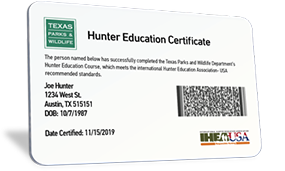
AGE REQUIREMENTS FOR TEXAS HUNTERS
Every hunter in Texas who was born on or after September 2nd, 1971 is required to complete Hunter Education Certification. Hunters must be 9 years of age or older to get certified.
Excellent!
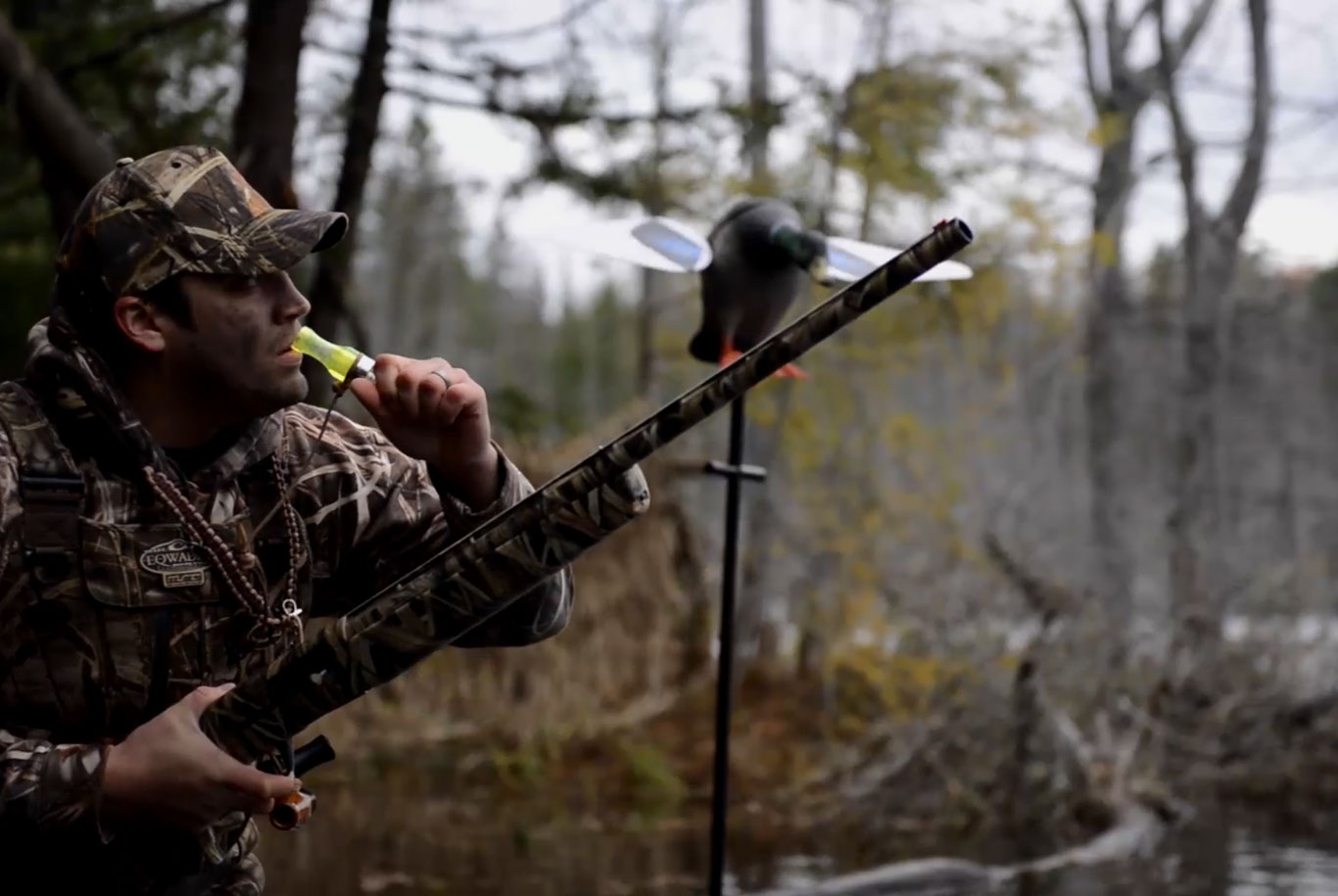
![]()
OFFICIAL TEXAS HUNTING COURSE
The Texas HUNTINGsmart! Hunter Safety Course is approved and accredited by the Texas Parks & Wildlife Department. With more than 3,000 Five Star Reviews, we’re proud to be recognized as North America’s provider of online courses for hunting, boating, paddling, off-roading and snowmobiling.
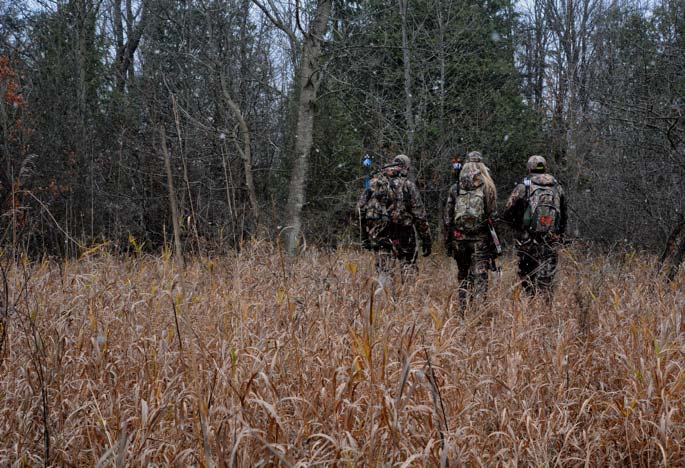
![]()
INTERNATIONAL HUNTER EDUCATION ASSOCIATION APPROVED
The HUNTINGsmart! Texas Hunter Safety Course is accredited and approved by the International Hunter Education Association and recognized by the National Shooting Sports Foundation. IHEA develops education standards for hunter safety and coordinates with hunting law administrators in all 50 states and U.S. territories.

Watch, Listen & Learn
Take the course anywhere, on any device, at any time.
HUNTINGsmart!'s Texas Hunter Education Course is designed for all ages and skill levels. Our animated, narrated and live action videos guide your learning experience and help you pass. Study from your Smartphone, Tablet or Desktop and switch between devices at any time. HUNTINGsmart! automatically tracks your progress so you can start, stop and study at your own pace.

TEXAS HUNTING EDUCATION REQUIREMENTS
WHAT IS A TEXAS HUNTER EDUCATION CERTIFICATE
A Texas Hunter Education Certificate proves that you’ve obtained the knowledge needed to hunt safely, responsibly, and ethically, within the state of Texas. Any person born on or after September 2nd, 1971, who hunts within the state of Texas must carry proof of hunter education.
WHERE CAN I GET MY TEXAS HUNTER EDUCATION CERTIFICATE?
You can get your Texas Hunter Education Certificate by completing the Official HUNTINGsmart! Course online. Once you successfully complete the online study guide and final exam, you can print a temporary certificate immediately. Your official Hunter Education Education Certificate will be available for download from the Texas Parks and Wildlife department within 7-10 days.
HOW OLD DO I HAVE TO BE TO GET A HUNTER EDUCATION CERTIFICATE IN TEXAS?
You must be 9 years of age or older to obtain a Hunter Education Certificate within the state of Texas. Hunters who are less than 9 years of age, or who are 9-16 years of age and have yet to obtain certification, must be accompanied to hunt legally within the state. Hunters who are 17 years of age or older and are not certified, may purchase a one-time hunter education deferral. Proof of certification or deferral must be carried with the hunter and be available for inspection.
AGE AND SUPERVISION REQUIREMENTS
Hunters who are less than 9 years of age, or who are 9-16 years of age and are not certified must be accompanied by a supervisor. The supervising individual must be 17 years of age or older and have obtained hunter education certification or be exempt. They must also be within normal voice control of the person being supervised.
HOW LONG DOES IT TAKE TO GET MY HUNTER EDUCATION CARD?
It typically takes about 4-6 hours to get your Texas Hunter Education Certificate online. Once you’ve completed the online course and official test, you can print a temporary certificate. Your permanent certificate will be available for download from the Texas Parks and Wildlife Department within 7-10 days of course completion.
CAN I GET REFRESHER LESSONS AFTER TAKING THE TEXAS HUNTING COURSE?
Yes, HUNTINGsmart! offers a free online Knowledge Base of the most up-to-date Texas hunting laws and regulations, including licensing requirements, equipment recommendations, firearm safety, and more.
Who is exempt from having to obtain a Texas Hunter Education Certificate?
- Hunters born prior to September 2nd, 1971
- Hunters who are 9 through 16 years of age who are directly accompanied
- Hunters who are 17 years of age or older who have purchased a “Hunter Education Deferral”
What is a Hunter Education Deferral?
Texas residents who are 17 years of age or older, who have not yet completed hunter education, may defer the course completion by purchasing a Hunter Education Deferral. The one-time deferral is valid up to the end of the current license year. Deferrals can be purchased for $10 for license vendors.
Note: Any person who has received deferred adjudication for violation of Texas’ mandatory hunter education requirement is prohibited from applying for the deferral.
Is my Texas Hunter Education Certificate valid in other states?
Yes. The Texas Hunter Education Certificate is accepted in all states, provinces, and countries that have mandatory hunter education requirements. Although most regions will accept the Texas Hunter Education Certificate, hunters should always be sure to check the rules and regulations of the region where they plan to hunt.
What's the difference between a Hunter Education Certificate and a Hunting License?
A Hunting License is different from a Hunter Education Certificate. A hunting license is required for any person (resident or non-resident), of any age who hunts any animal, bird, frog, or turtle within the State of Texas. Varying licenses must be purchased and carried depending on the hunters age, residency, and the type of game being hunted. Certain exemptions may also apply depending on the game animal being hunted. For more information on Texas hunting licenses visit the Texas Outdoor Annual Licenses and Permits page.
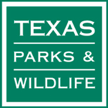
HUNTING LICENSES, STAMPS AND PERMITS
HUNTING LICENSES
A hunting license is required for any person who hunts any animal, bird, frog, or turtle within the state of Texas. They are required for residents and non-residents, no matter the hunter’s age.
Hunting licenses are not required for:
- Coyotes that are attacking, about to attack, or have recently attacked livestock, domestic animals, or fowl.
- Feral hogs that are on private property, so long as the land owner has given authorization for them to be hunted
- Fur-bearing animals , if the hunter possess a commercial trapper’s license
- Depredating fur-bearing animals, if the animal is causing depredation to a landowners property
Note: Keep in mind that while a hunting license is required for any person to hunting within the state, permits, and endorsements may be required in addition. Permits and endorsements are similar to licenses, but are only required for certain species, or to hunt with a particular firearm or in a certain region.
HUNTING PERMITS
Hunting permits are slightly different from licenses, as they are only required under certain circumstances. Permits may be required within the State of Texas to legally take various game species, such as sandhill crane or pronghorn antelope, or to hunt in certain locations. Permits are required in addition to a hunting license. Be sure that you’re familiar with which permits may be required to hunt a particular species or region.
HUNTING ENDORSEMENTS
Hunting Endorsements may be required, in addition to a license, to hunt with various types of firearms or to hunt certain game species, such as archery hunts, some migratory game birds, ducks, and certain upland game species. Hunting Endorsement requirements may vary depending on the region or county in which you’re hunting. Be sure to check the regulations and have obtained the proper endorsements before heading-out or taking any game.
TEXAS HUNTER CERTIFICATION AGE REQUIREMENTS

BETWEEN 9 AND 16 YEARS OF AGE
Hunters who are 9-16 years of age must complete a field course in addition to the online course in order to obtain Hunter Education Certification. Upon completion of an online hunter education course, youth hunters will be issued a certificate of course completion. The certificate must be presented at the field course in order to gain access. Upon completion of the field course, the Texas Parks and Wildlife Department will mail the permanent Hunter Education Certificate within 30 days.

17 YEARS OF AGE AND OLDER
Hunters who are 17 years of age or older can obtain their Hunter Education Certificate entirely online, without a required field day. Upon completing the online course, including all required quizzes, and passing the final test, hunters will be able to print a temporary Hunter Education Certificate, which can be used to hunt legally right away. The permanent Hunter Education Certificate will be available for download from the Texas Parks and Wildlife website within 7-10 business days.

EXCEPTIONS
- Hunters born prior to September 2nd, 1971
- Hunters who are 9 through 16 years of age who are directly accompanied
- Hunters who are 17 years of age or older who have purchased a “Hunter Education Deferral”

Texas's Hunting Fines

Failure to carry Hunter Education Certificate or deferral
Up to $500

Hunting from a vehicle
Up to $4,000

Violation of state park hunting regulations
Up to $500

Hunting with an artificial light source
Up to $4,000

Hunting at night
Up to $4,000
TEXAS HUNTING FAQS
DO I NEED A HUNTING LICENSE TO HUNT WITHIN THE STATE OF TEXAS?
Yes. A Hunting License is different from a Hunter Education Certificate and is required for any person, of any age who hunts any animal, bird, turtle or frog within the State of Texas. This includes both residents and non-residents Varying licenses must be purchased and carried depending on the hunters age, residency, and the type of game being hunted. Certain exceptions may apply depending on the game animal being hunted. For more information on Texas hunting licenses visit the Texas Outdoor Annual Licenses and Permits page.
WHAT ARE THE TEXAS TAGGING REQUIREMENTS?
Certain game species in Texas must be tagged after they’ve been taken. Tagging instructions may vary depending on the game animal, however typical tagging instructions require that:
- The hunter uses the correct type of animal tag (ex. Turkey tags may not be used for deer)
- The animal type of category be clearly identified (ex. Buck vs. antlerless deer)
- The animal be tagged prior to being field dressed
- The month and date be identified on the tag (some tags require that a notch be made in the correct location to identify the date)
- The tag be attached to the animal in the correct location, depending on the species
Some tags may also require that a log be completed, and that specific details of the animal be noted For example, some deer tags require that the antler spread be indicated if it is greater than a certain length. Failure to properly complete the log may result in a fine of up to $500.
WHAT ARE THE HUNTER ORANGE REQUIREMENTS IN TEXAS?
Any person who is hunting on public lands, including state lands, national forests, and grasslands, during daylight hours when hunting with firearms is permitted, is required to wear a minimum of 400 square inches of hunter orange material. The material must include orange headgear, and at least 144 square inches on both the chest and back.
ARE THERE ANY HUNTER ORANGE EXEMPTIONS?
Yes, hunter orange exemptions for these requirements include:
- Persons hunting turkey, migratory birds, alligators, or desert bighorn sheep
- Persons within the enclosed passenger compartment of a motor vehicle
- Persons within a designated campground, vehicle parking area, boat launch facility or department check station.
WHAT ARE THE BAG LIMITS IN TEXAS?
“Bag limits” restrict how many animals of a particular species may be harvested per hunter. Bag limits are typically updated annually per species, and are implemented in order to maintain, regulate, and control game species populations. Bag limits may restrict a hunter to a certain number of a particular type of game species per day, or per season, depending on the type of game. It is unlawful for any hunter to exceed their bag limit.
Bag limits within the state of Texas vary by, region, county, season, and type of game animal. Hunters must understand and follow bag limits within their county. For more information on bag limits by county and species check out the Texas Outdoor Annual.

GAME AND NON-GAME SPECIES
GAME SPECIES
Texas is home to a wide variety of game species, and offers hunting opportunities for hunters of all ages and skill levels. With its vast and varied landscape, it is truly one of the top hunting destinations in North America. Games species in Texas include white-tailed and mule deer, a variety of waterfowl including various species of duck and goose, and upland game birds including turkey, quail and dove. Additionally the state boasts numerous big game hunting opportunities, as well as desert-dwelling species such as pronghorn antelope and desert bighorn sheep, not to mention alligator hunting opportunities, javelina, and feral hogs.
Overall the state is, without question, a hunting hot spot. For more information on game species in Texas, and the rules and regulations that apply, visit the Texas Parks and Wildlife website.
NON-GAME SPECIES
Some animals in Texas are qualified as “non-game species”. Hunters may still harvest non-game species however they must obtain a license specific to the animal to do so. There is no closed season for non-game species- they may be hunted at any time using lawful means, although certain regions may have restrictions in place.
Non-game species in Texas include coyotes, mountain lions, bobcats, flying squirrels, and a variety of rabbit species, in addition to turtles, porcupines, and armadillo.
Taking any non-game species for commercial purposes, such as sale, barter or exchange is unlawful in the state, and may result in heavy fines.
Hunters should also note that additional caution should be taken when hunting armadillo and they may carry leprosy.
THREATENED AND ENDANGERED SPECIES
Texas is home to several species which are categorized as either threatened or endangered. These species may not be hunted under any circumstances – to take an endangered or threatened species is unlawful within the state.
Endangered species within the state include the grey wolf, red wolf, ocelot, jaguarundi and others. Threatened species include the black bear, bald eagle, various types of reptiles, snakes and tortoises.
INVASIVE SPECIES
Like most states, Texas has been invaded by a variety of invasive and nuisance species. These animals, plants, fish, and invertebrates typically have no natural predators which can result in rapid spread and population growth. This in turn can seriously harm the state’s lands and waters, and can be detrimental to the health and population numbers of a variety of the state’s native plants and animals.
Invasive species in Texas include species such as zebra mussels, giant salvinia, lionfish, feral hogs, nutria, giant fire ants, africanized bees, asian carp, hydrilla and asian clams.
Anyone who encounters invasive species within the state is encouraged to report it to help stop the spread. Sightings of invasive species in Texas can be reported at texasinvasives.org
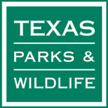
TEXAS HUNTING SEASONS
Hunting seasons and dates per game animal may change annually, depending on a variety of factors. Season dates are further broken out by county, region or “zone”. Additionally, seasons are often categorized by firearm time, including archery, firearms, and muzzleloader seasons.
Additionally, some types of game animal may be hunted year-round depending on the species or where the game animal is being hunted (ex. on private property).
Hunters must keep up-to-date on the seasons date for their zone and type of game animal. Seasons dates may change annually. For the most up-to-date information on game animal season dates in Texas visit the Texas Outdoor Annual website.

White-tailed Deer
White-tailed deer seasons offered in Texas are categorized by date and zone. Seasons include the general season, special late-season, youth season, archery season and muzzleloader season. Season dates typically range from late fall/early winter through to January of the following year.
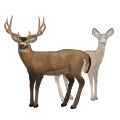
Mule Deer
Mule deer season is slightly shorter than white-tail season, running from late fall/early winter through to mid December. Seasons include a general season, broken out by region, and an archery season.
Learn more about hunting mule deer in Texas.
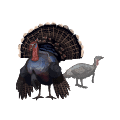
Turkey
Rio-grande turkey seasons in Texas are categorized by date and zone. Seasons include fall and spring seasons, in addition to youth-only fall and spring seasons. Fall season dates range from November through to January, while spring season takes place from March – May. Eastern turkey season is shorter, and offered within Eastern Texas in the spring from April through to mid may.
Learn more about hunting turkey in Texas.
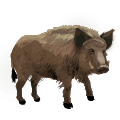
Wild or “Feral” Hog
Feral hogs are a nuisance species in the state of Texas. There is no bag limit or closed seasons for feral hog – they may be taken at any time of year, however landowner permission is required to hunt them.
Learn more about hunting wild hog in Texas.

DOVE
Dove seasons are broken out by zone, with the season typically beginning on September 1st (the “official” start of hunting season for many hunters). Dove hunting seasons include the general season and youth-only season, with dates ranging from September 1st – January of the following year.
Learn more about hunting doves in Texas.
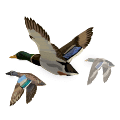
DUCK
Duck hunting seasons are similar to dove, which are also broken out by zones. Seasons include regular and youth-only and range from October – January of the following year.
Learn more about hunting ducks in Texas.

Pronghorn Antelope
Pronghorn antelope may only be harvested by hunters who have permit. Permits are only available to property owners and managers within the state of Texas. Additionally, pronghorn may only be harvested within select counties, and are organized by Pronghorn Herd Units. Pronghorn season is short, typically beginning in early October and lasting about 2 weeks. It is the responsibility of the hunter to ensure that they have obtained all of the proper licenses and permits required to hunt pronghorn, and that the license has been issued to the property where they plan to hunt.
Learn more about hunting pronghorn in Texas.
HUNTING ON PUBLIC OR PRIVATE LAND
PRIVATE LAND
Most of the land in Texas is either privately owned or managed. Hunters may freely take most game animals on their own land, or may get permission from private landowners to hunt on their property. Hunters must be aware of rules and regulations that apply when hunting on private property, such as landowner rights, which include the following:
- Landowners may grant or deny permission to hunt on their land
- Landowners are permitted to charge for a hunting lease
- Hunters may be required by the landowner to sign a liability waiver
- Landowners may impose stricter bag limits or harvest requirements for game animals taken on their property, within existing game laws.
Hunters who are in search of private lands with hunting opportunities can use the free Hunt Texas Online Connection service, which connects landowners with hunters. The service makes it easier for landowners to manage wildlife populations and provide information to hunters about opportunities on their property.
Additionally, there are numerous lease opportunities within the state. Hunters who purchase a lease should create a lease agreement which is signed by both the landowner and hunter(s), and include all of the participants’ names and addresses.
PUBLIC LAND
The State of Texas offers over 1 million acres of publicly accessible land, making it easy to find a prime hunting location with a variety of game species. These lands include spaces owned by the TPWD and lands that are leased by Texas Parks & Wildlife from other state or federal agencies, in addition to privately owned lands that allow public access thanks to cooperating landowners.
Hunters in Texas may purchase an annual public hunting permit which allows them access to more than 180 different hunting areas and a wide variety of game species. Visit the Texas Parks and Wildlife Department website for more information on public land hunts, year-round hunting opportunities, drawn hunts, and workshops. Hunters can also use Texas’ public hunting areas interactive map to easily locate accessible public land for hunting.
RESTRICTED HUNTING AREAS
Many regions within the state of Texas have placed restrictions within hunting areas. Some of these areas may not permit hunting at all, while others have put regulations in place which restrict where firearms are permitted, which firearms can be used and when they may be discharged, and which animals may be taken. These restrictions may be in place depending on the county, or if the hunter is on federally owned property.
It is the responsibility of the hunter to be aware of and follow these restrictions. Violations of these restrictions may result in heavy fines. For more information on restricted areas within Texas’ counties visit theTexas Parks and Wildlife website.
Wildlife Management Areas
What Are Wildlife Management Areas?
Wildlife Management Areas (WMAs) are lands within Texas that are managed and controlled by the Texas Parks and Wildlife, wildlife Division. These areas are open for public use and a variety of outdoor recreational activities, including hunting. Currently, there are 47 WMAs throughout the state, which encompasses over 700,000 acres of publicly accessible land.
These sites also allow for the conduction of research on the state’s wildlife population, habitats, and conservation of resources.
WMA Regulations
Hunters who plan to access these areas are encouraged to contact the WMA where they plan to hunt to learn about specific regulations that may apply in the area. Regulations may vary per WMA – some example of restrictions that may apply to hunters in these areas include:
- Visitor registration (check-in and check-out requirements)
- Vehicle access restrictions
- Firearms types restrictions
- Additional hunting permit requirements
Hunters accessing these areas must keep in mind that they may be open for multiple types of recreational use, including hiking, birdwatching, horseback riding, etc. Extra caution should be taken at all times to ensure the safety of all WMA users.
The Lone Star State. Ready and rarin’ to go.

Where to Hunt in Texas
The state of Texas is one of the top states for hunting in the US. With such a wide variety of game opportunities, landscapes, and guided tours to choose it can be difficult to know where to begin. To choose a destination that appeals to you, you’ll first need to choose the type of game you plan to hunt.
Deer hunters will have no shortage of locations to choose from including most of southern Texas, the Edwards Plateau, Cross Timbers and the Post Oak Savannah – these locations offer plenty of deer and a variety of landscapes to choose from depending on your preference and firearm of choice.
Southern Texas, Edwards Plateau and Cross Timbers, in addition to the panhandle are also great choices for turkey hunters – in fact Turkey’s inhabit 223 of Texas’ 254 counties with hunts taking place in both the spring and fall.
The state is also home to plenty of guided tours that offer opportunities to hunt just about every type of game animal in the state including deer, turkey and duck, in addition to some of Texas’ more exotic game animal types such as axis deer and barbary sheep. Most guided tour outfitters will offer a variety of package options to fit various game animal preferences and budgets.
For more information on various game animal types, top hunting destinations, guided tours, and the rules and regulations that apply within various hunting lands in the State of Texas, visit the Texas Parks and Wildlife website.
